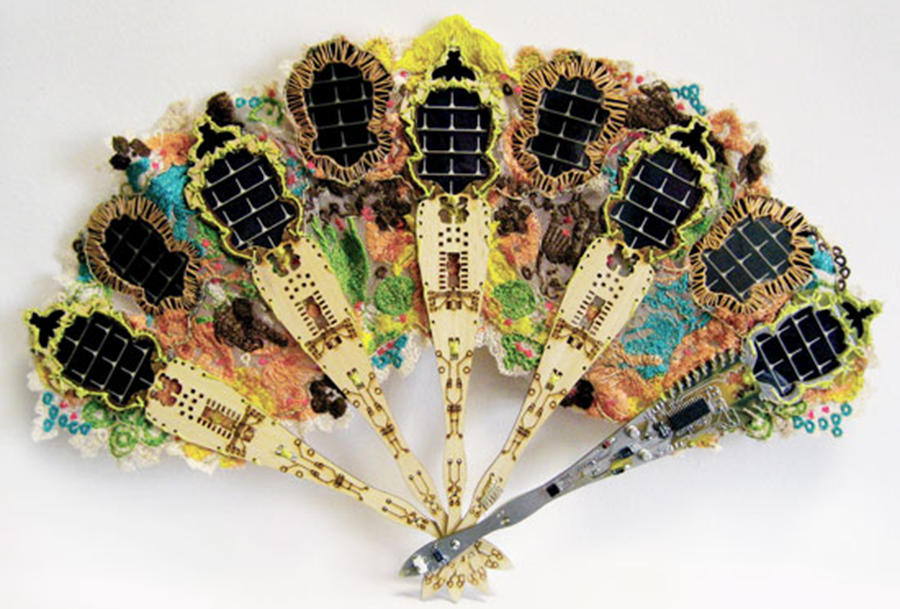As wearable devices are becoming smaller and flexible, scientists and designers are exploring ways to make flexible batteries or alternative methods to produce, store and manage energy in a wearable device.
Ricardo O’Nascimento of FashNerd discusses some innovations that have found a way around obstacles when it comes to energy and power management.
Elena Corchero
Solar Vintage fan, seen in the picture above, is a collection of the Spanish designer Elena Corchero. She created accessories that use solar cells to capture energy while embellished with fabulous craft skills and smart materials. She was able to bring attention to the beauty of the electronics and gave a soft touch to them. The combination of design, craft, and innovative smart materials gives this collection a special place in this narrative.
Read more Jenax Will Exhibit World’s First Truly Flexible Battery at Wearable Technologies 2018 San Francisco
Wearable Solar by Pauline van Dongen
Dutch designer Pauline Van Dongen has been consistently presenting us with designs that have solar cell technology embedded. The flexible solar cells found in Van Dongen’s designs are created by the scientists at Holst Institute. What started as a pocket housing for the solar cells now also utilizes other technologies that allow more comfort and wearability. Van Dongen brings her expertise on design for the body to the technology, and she is one of the most influential designers exploring this field.
Read more Yarn Battery Could Power Smart Clothes and Wearables
Captain Electric Project by XS Labs
XS Labs is a design research studio with a focus on innovation in electronic textiles and reactive garments. The studio, back in 2009, developed a project called Captain Electric – a collection of three dresses that use energy from movement to generate electricity in the form of lights and sound, instead of camouflaging the power-generating mechanisms. In an interview, XS Labs founder Joanna Berzowska told Ricardo that the dresses were the result of a development process that included a series of structured brainstorming and body-storming exercises. “Previous work in body-generated power strives to seamlessly integrate generators into wearable artefacts so as not to make their presence “obvious or annoying.” Most often, this is accomplished by harnessing the energy from walking by embedding generators in the soles of shoes. We chose to pursue a different approach, one that is heavily influenced by the field of fashion design. While it is difficult to accept an uncomfortable running shoe or other fitness garments, it is easier to embed the discomfort and the inefficiency of current human-generated power solutions into the culture of fashion and costuming,” she said.
“The Captain Electric garments focus on alternate definitions of functionality, such as pleasure, fun, and beauty, to allow playful and engaging design concepts, while leveraging the discomfort to influence the conceptual direction of the experience,” she added.













